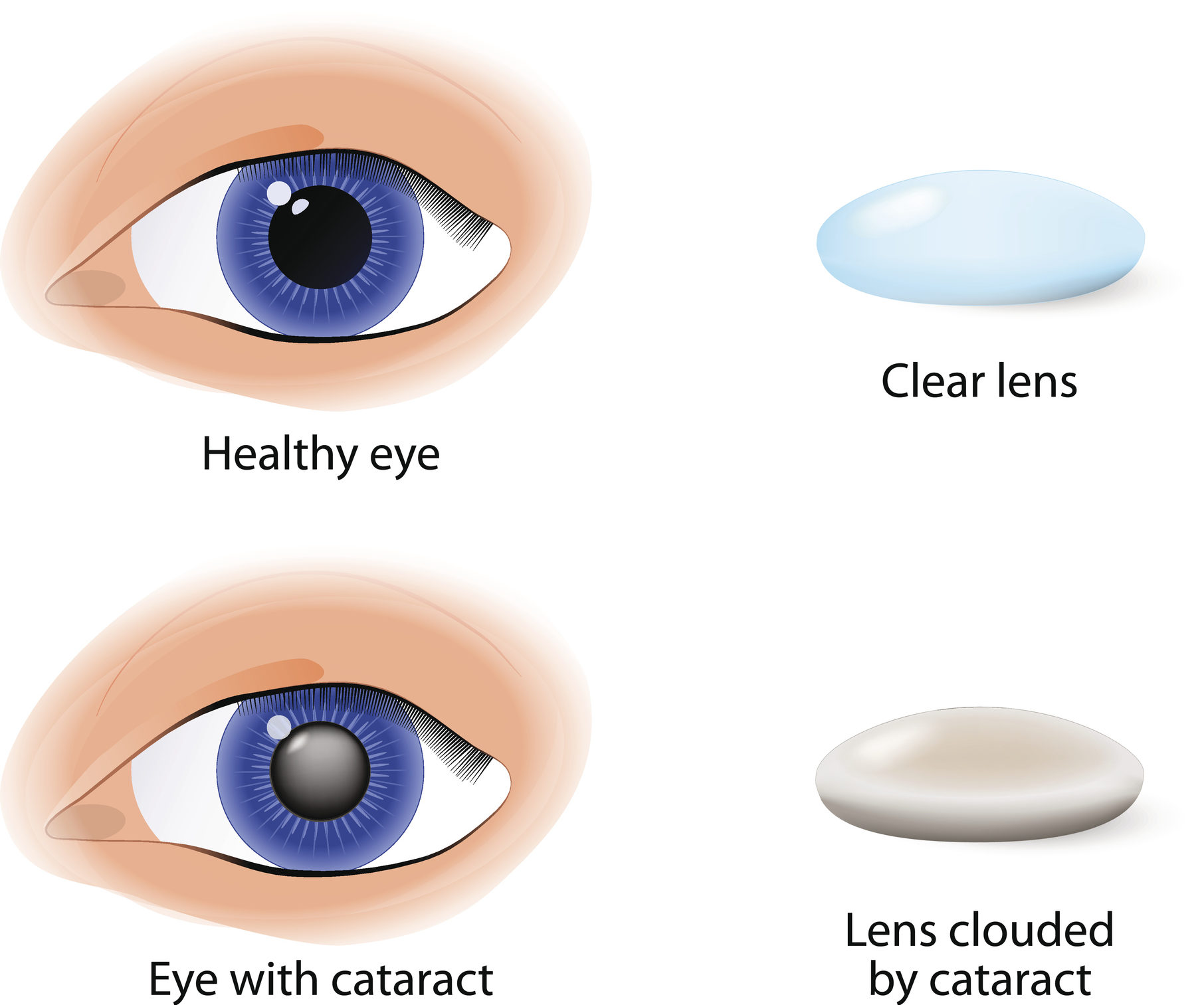
What is cataract surgery ?
The cloudy lens can be surgically removed and replaced by a clear artificial lens implant called the intraocular lens
(IOL), to restore good unaided vision in the operated eye.
The human crystalline lens is a clear structure within the eye, that helps focus light rays onto the retina - the layer of light-sensing cells lining the back of the eye - to produce a sharp image of what we see.
The crystalline lens, gradually loses its clarity with aging, due to compression of the lens fibres. This results in a yellowish
or brownish discoloration of the human lens. Scattering of light occurs as it passes through the hazy lens, which degrades
the quality of the image formed on the retina.
Why does cataract occur?
- Natural process of aging
- Occurs earlier in patients with Diabetes
- Secondary to prolonged intake of steroid medications
- Due to chronic inflammation inside the eye
- Congenital or developmental etiology
- Secondary to trauma
What are the symptoms of cataract ?
- Blurred or hazy vision, double vision
- Poor night vision
- Glare or haloes while looking at bright lights or at car headlights at night
- Difficulty in reading small letters
- Frequent change of glass power to improve eyesight
- Eyestrain, headache etc
How is cataract treated ?
- Vision can be improved in the early stages by change of glasses
- Control of systemic disease such as Diabetes
- Surgical removal of the hazy lens and replacement with an artificial intraocular lens implant
Extracapsular cataract surgery :
In this surgical technique, a large incision (9 - 10mm) is made, following which the cataract
is removed from the eye in one piece. An intraocular lens in then implanted into the eye. As
the surgical wound is quite large, it needs to be closed at the end of surgery using 6 - 7
stitches. It usually takes a few weeks to recover from this surgical procedure.
Phacoemulsification cataract surgery (Phaco / Microincision Cataract Surgery) :
In this modern surgical technique, the cataract is broken down into small fragments using
ultrasonic energy. The probe is passed through a 2mm incision and the emulsified cataract
sucked out of the eye. A foldable intraocular lens is then implanted into the eye. No stitches
are necessary to close the surgical wound as it is very small and self sealing.
What can I expect if I decide to undergo the cataract operation ?
Once you decide to undergo cataract surgery, your surgeon will discuss in detail regarding the surgical procedure,
risk benefits of the same, and answer all your doubts regarding the procedure.
Before surgery,your eye will be measured to determine the proper power of the intraocular lens that will be placed
in your eye. Ask your ophthalmologist if you should continue taking your usual medications before surgery. You
should have someone drive you home after surgery. Surgery is usually done on an outpatient basis.
When you arrive for surgery,you will be given eyedrops in the eye to be operated. During surgery local anesthetic
will numb your eye. The surgical procedure usually lasts only 10 - 15 minutes. You will be awake and comfortable
during the entire procedure. After surgery is completed you will wait for a short period in the recovery area. Then
you are ready to return home.

 +91 982-577-8009
+91 982-577-8009